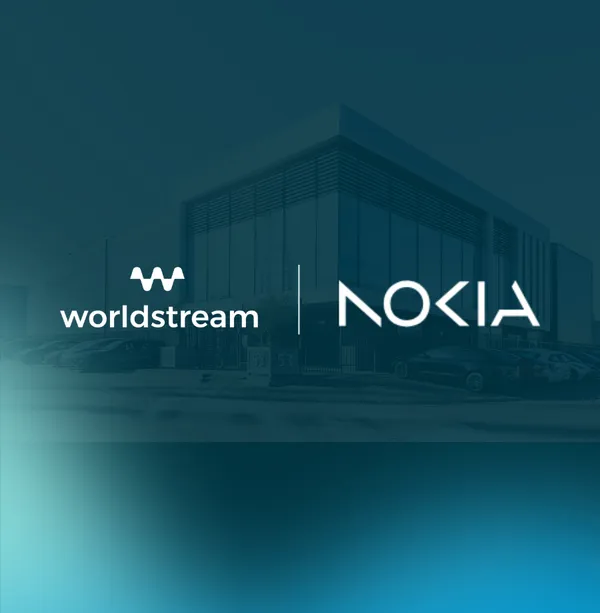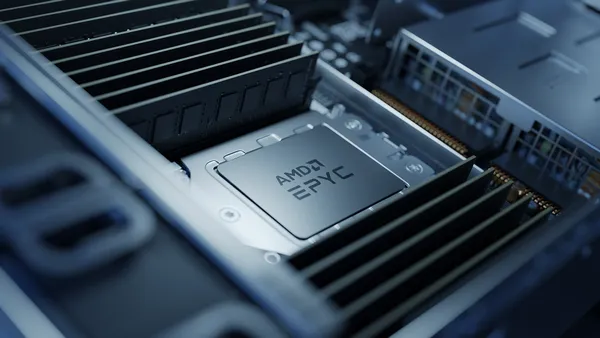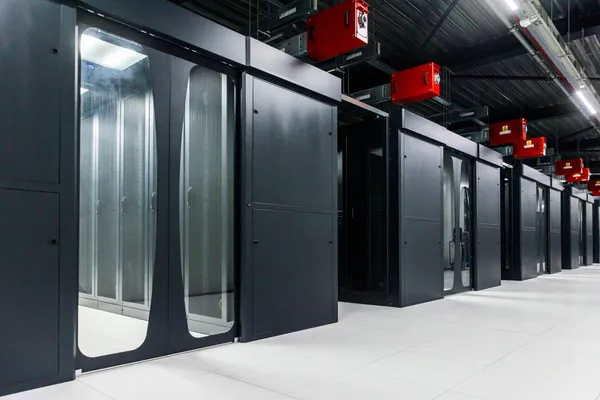These 5 Industry Trends are Driving SDN Adoption

Knowledge blog

IT managers are increasingly opting for software-defined networks (SDNs) to deploy their data center services infrastructure, hybrid cloud, and cloud-based applications in a highly flexible way. In this article we shall give an overview of industry trends that are particularly driving the adoption of SDN when it comes to deploying IT infrastructures.
Leer Van Deze 5 Trends Over SDN-adoptie
Software-defined networking (SDN) is a network architectural solution to help improve network efficiency and agility by deploying software-based functionality and a software-based network management layer on top of a physical network backbone. It allows organizations to govern massive amounts of data and network traffic in a flexible and cost-efficient way.
According to Allied Market Research, the worldwide software defined networking market was valued at almost $10 billion in 2019 and is expected to reach $72.6 billion by 2027, increasing at a CAGR of 28.2 percent between 2020 and 2027. Another research company, Mordor Intelligence, has stated that the software defined networking market was worth $12.61 billion in 2020 and is predicted to grow at a CAGR of 30.75 percent to $63.04 billion by 2026 (2021 – 2026). The rapid adoption of software-defined networking technology in the market is driven by a variety of technology and business trends which we will elaborate on in this article.
Combining SDN and NFV Technologies
Before we delve further into these market trends underlying the increasing use of SDN on regional and global levels, let’s first briefly outline the definition of what exactly SDN technology entails. With SDN technology, the hardware layer including network routing and switching is decoupled from the layer where network management and control takes place. The software-defined network is managed by a central SDN controller. This in fact is a key element of the concept. It acts as the brain of an SDN network and is used to design and control the physical and virtual network elements from a central location. Instead of having to setup each switch or router individually, with SDN and its central-guided network management layer it is possible to create the highest visibility for the infrastructure. It also allows for the highest scalability, flexibility and even automated allocation of network resources.
When combining SDN with NFV (network functions virtualization) technology, like Worldstream has done with its Worldstream Elastic Network offering on top of our global backbone, the software-defined networking infrastructure is able to add even more flexibility when it comes to deploying IT infrastructures. That’s to say, when the design of the SDN controller is done right. It’s a technology which the R&D team at Worldstream has developed to create optimal, unique results for their clients.
Both SDN and NFV add to the virtualization and abstraction of hardware resources. While SDN separates the network control from the network forwarding functions, NFV allows for the abstraction of network forwarding as well as other network functions from the hardware on which it is deployed. Bottom line, it means that NFV substitutes dedicated hardware with virtualized software to establish network services like routers, load balancers, firewalls, and so on. These network hardware appliances are replaced by virtual machine software. In a traditional network setup, a hypervisor would be designated to manage such virtualized network services, which is the role that SDN plays in this case. Together, NFV and SDN technologies make the network architecture and deployment of IT infrastructures extremely flexible, both from an appliance and network traffic point of view.
However, let’s return to the main topic of this article, the market trends that are fueling the use of SDN. The following 5 industry trends are driving the adoption of SDN: Rising Deployment of Cloud-Native Applications; Emergence of 5G; The Work from Home Trend; The IoT Movement; as well as Hybrid and Multi-Cloud Adoption. Let us elaborate on that.
1. Rising Deployment of Cloud-Native Applications
Within organizations, the use of ‘cloud-native’ applications has gained quite some traction over the last several years. Enterprises can operate quicker, more efficiently, and at a larger scale thanks to cloud-native software and services architectures, according to 451 Research. The global research company anticipates the cloud-native trend to continue to rise, powered in part by intersections with adjacent technologies and trends, such as data and analytics, artificial intelligence (AI) and machine learning (ML), security, and IoT/edge computing. SDN infrastructure is the network counterpart to the agile nature of a cloud-native architecture.
Cloud-native is much more than simply registering with a cloud provider and running cloud-based applications on their platforms. A cloud-native approach to setting up IT infrastructures and deploying cloud-native applications can be used to create and run highly scalable applications in public, private, and hybrid clouds. The use of microservices, containers, service meshes, immutable infrastructure, as well as declarative application programming interfaces (APIs) are some of the features that best highlight this approach. Utilizing features like these really affect the design, setup, deployment, and operation of applications. It is what truly makes them ‘cloud-native.’
Cloud-native applications may function in a highly distributed and independent way while easily capable of adapting to dynamic and demanding needs within private, public, and hybrid cloud settings. Based on application demands, a cloud-native approach allows for dynamic allocation of IT infrastructural resources within these cloud environments.
The capabilities provided by an underlying, programmable network infrastructure are critical to the health and durability of such a cloud-native architecture. SDN can help with that while also increasing the speed and agility of cloud-native applications. Organizations may use a cloud-native approach to create distributed systems that are highly adaptable. SDN simplifies the complexity of managing these distributed physical network infrastructures with programmability and centralized control.
SDN technology, especially when combined with NFV as is done by Worldstream, makes it eminently possible to dynamically support cloud-native applications using the virtualized equivalents of physical routers, firewalls, load balancers and other kinds of networking equipment traditionally used in on-premises and in co-located data center environments. The shift away from physical dependence toward virtualized infrastructural services may be considered as a crucial step toward becoming genuinely cloud-native, resulting in the deployment of truly scalable, agile applications at the lowest possible cost. It is thus a major driving force for the further adoption of SDN.
2. Emergence of 5G
When it comes to mobile telecommunications infrastructure, 5G is now gradually replacing 4G networks. 5G can bring us lightning fast and utmost reliable connectivity options while being able to connect huge numbers of appliances in a low latency manner. It is not only intended to support telecom operators though in implementing top-notch mobile broadband networks for connecting smartphones, iPads and so on. It also paves the way for intelligently deploying industry applications supported by private 5G networks and reaping the benefits of the industry 4.0 concept. Next to that, it can bring high speed, low latency network connectivity required for Internet of Things (IoT) applications and the growing distributed use of smart sensors. Also, for traffic, self-driving cars and smart city management it can bring tremendous benefits.
Software defined networking, in particular the combination of SDN and NFV technology — like Worldstream has embedded in its Worldstream Elastic Network offering — is at the heart of emerging network architectures for 5G worldwide. Network programmability is a major aspect of 5G. By eminently allowing for network programming, SDN technology plays a crucial role in this area.
Network slicing is another notable concept that will arise with the use of 5G. Network slicing entails the segmentation of a network into separate logical networks of various sizes and architectures, each dedicated to distinct types of services. It allows for customization of network operations by providing multiple levels of service for different network users. Each of these network slices may have their own speed, latency, and Quality of Service (QoS) characteristics. To take advantage of these potential 5G benefits, SDN has to be combined with NFV technology which offers the foundation for network slice orchestration and automation.
So, 5G is much more than simply adding bandwidth capacity and reduced latency. It is also about adaptability, manageability, and the ability to develop new services. The emergence of private 5G is a great example of this. As authorities provide additional spectrum to businesses so they may develop and operate their own private 5G networks — networks that don’t exchange traffic with other cellular networks in the area — the adoption of private 5G networks is gradually gaining pace throughout the world. Again, SDN is a crucial factor behind the emergence of the private 5G network since it allows network parts to be virtualized. It gives companies more control over the data on the network, with evolving capacity fully adapting to the actual business needs. SDN technology is the driving factor behind private 5G adoption as it helps accelerate the flexibility and manageability of private 5G.
3. The Work from Home Trend
While working from home isn’t a mandatory policy anymore, an increasing number of employees worldwide have shifted at least part of their working hours from the offices to their homes. Research between 2020-2022 from Eurostat shows that on average 30% of Europeans regularly work remotely from home. According to Forbes, at the start of 2023, 68% of all Americans would prefer to work fully remote. It seems that working from home, or more specifically remotely, is not a trend that is about to go away. Organizations on their part are straining to accommodate the massive inflow of remote worker Internet traffic streaming in over company firewalls to VPNs (Virtual Private Networks). They’re up against the task of keeping business as normal in an unfamiliar environment, all while fending off fresh waves of phishing and DDoS attacks. However, legacy VPNs just weren’t designed to handle a big percentage of an organization’s employees, or in some cases even all of them, accessing the company network remotely.
The associated network issues and bottlenecks might be challenging for organizations that are still reliant on legacy, physical network infrastructure. Not for those who have already moved their network capabilities from physical to virtual, including firewalls, anti-DDoS, and cloud-onramps. This can be done through the use of SDN/NFV technologies, like Worldstream has incorporated in its SDN-powered infrastructural as-a-service offerings.
As an organization, you just can’t risk providing remote workers with a faltering Internet connection every time they are in a Teams, WebEx, Zoom or Google Meet meeting. Sometimes it may seem like the cause of a stuttering digital meeting is in the meeting platform itself, or that the speed of Software-as-a-Service (SaaS) based business applications leaves something to be desired, while an organization’s own (traditionally designed) network may be the real culprit. A modern network infrastructure design, in other words a software-defined one may be of great help in this case.
SDN enables flexible alignment with evolving business needs including highly fluctuating levels of remote working. With the lowest latency values readily assured, as well as the ability to seamlessly scale the bandwidth capacity up or down, even in a segmented way, SDN allows for the infrastructural agility pretty much every CIO and CTO could wish for. Also, when it comes to implementing and managing cybersecurity solutions for hybrid working concepts. All in a cost-effective manner.
A traditional network can be somewhat static and mainly linked to an office building, while an SDN as a modern network can dynamically follow all the movements of an organization. Both when it comes to the way employees use applications, as well as the applications themselves and the infrastructure on which they run – including on-premises and in the cloud. The work from home trend is therefore another important driver for current market-wide adoption of SDN.
4. The Internet of Things Movement
According to IDC, expenditure on Internet of Things (IoT) infrastructure in Europe reached $202 billion in 2021 and will continue to increase in double digits through 2025. In 2021, the consumer sector remained the leading spender on IoT in Europe. Manufacturing, the second-largest industry, uses IoT solutions to track, monitor, and maintain industrial manufacturing devices that are part of the production value chain by analyzing the machine’s live stream of data.
As IoT matures in Europe and beyond and its demands on the network become more complex, SDN is the way to go to provide for optimal connectivity and data transfer. With traditional, hardware-based networks, major IoT challenges may arise when it comes to especially flexibility, latency, and security. Software-defined networking doesn’t have any constraints in this respect, meaning that SDN is uniquely able to solve these interconnectivity challenges for the IoT movement.
Because of its elastic nature, SDN makes it quite easy for an organization to manage the bandwidth that a network requires. Consider the healthcare industry as an example. Hospitals are most likely going to feature lots of IoT-based equipment and end-point gadgets for patients in the near term. All of these are anticipated to be networked and IoT-enabled. Some of these medical appliances might utilize extensive bandwidth on the hospital’s network. These hospitals will therefore require flexible bandwidth to real-time handle sudden stress on their networks, something SDN is able to facilitate.
To stay with this example, hospitals are dealing with sensitive patient data, necessitating end-to-end data security and compliance. The use of SDN technology allows hospitals to take their security levels to the max. SDN for example enables the establishment of private virtual networks that can be layered on a physical network, allowing IoT devices to be segregated from the rest of the network without the complexity that legacy virtual private network technologies may bring. It also allows for highly flexible deployment of cybersecurity solutions such as firewalls, anti-DDoS, and more.
When relocating hospital equipment throughout the premises, an appliance might have to be promptly connected at the new site, while the same network policies and controls should be dynamically pushed to the new place. These flexibility and security requirements really ask for network elasticity and the ability to establish the highest security levels in a flexible way. SDN provides for this flexibility in the face of massive data transfers brought by the IoT movement.
The concept of IoT is also time-sensitive, making the quality of connectivity with IoT appliances and connections with the cloud a top requirement. SDN infrastructure, as developed by Worldstream, offers great advantages in terms of jitter and latency over traditional networks. It does not tolerate jitter or delay, making it very suitable for IoT deployments.
5. Hybrid and Multi-Cloud Adoption
Multicloud/hybrid cloud support is becoming a key concern for organizations when picking a cloud provider for their IT infrastructures, according to the findings of a recently Google-commissioned study by IDG, based on a global poll of over 2,000 IT decision-makers. While 30 percent of respondents say multicloud/hybrid cloud support is a must have when selecting a cloud provider, 47 percent label it as a major consideration.
Small and medium-sized businesses up to large international corporations can all benefit from a hybrid and multi-cloud approach. The benefits come from increased resilience, flexibility, freedom of choice, and cost reduction. The key challenge however is to interconnect these different cloud and on-premises environments efficiently on a regional and/or worldwide scale. SDN offers the ultimate connectivity concept for hybrid and multi-cloud solutions.
With traditional networks, establishing direct connections to each cloud provider and data center location in a network setup can be quite expensive. At the same time, it can be difficult to manage when ever-increasing volumes of data and services are migrated to such a hybrid, multi-cloud environment.
Managing different connections with multiple cloud providers also necessitates knowledge, resources, and time. In addition, when aiming for proper management of multi-cloud infrastructure, IT staff will need to have technical expertise in each cloud. When each of these clouds are maintained and connected by distinct network providers, swiftly deploying and expanding new services might be difficult. Next to that, although a hybrid/multi-cloud infrastructure will provide more options for managing workloads, it may also expose businesses to a greater number of security breaches and cyberattacks.
With SDN technology these connectivity and security issues are basically history, particularly when it comes to establishing connections to multiple clouds. SDN allows for flexibility of IT infrastructure deployment as well as simplified cloud connectivity management and heightened security options, while also lowering network expenses and speeding up cloud adoption. With SDN, as organizations expand their operations, they can dynamically scale (up and down) their cloud infrastructure, add new cloud environments, and interconnect data center sites on regional and global scales. All monitored and managed from a single place by using SDN technology.
To conclude, SDN enables organizations to overcome the cloud connectivity gap while increasing visibility, scalability, flexibility, and security. As one of the five industry trends driving SDN adoption, it allows organizations to optimally take use of hybrid/multi-cloud and expedite their expansion on top of this infrastructure with an agile go-to-market strategy with new applications, services.
IT Infrastructure Offerings Powered by Worldstream’s SDN
Our SDN allows for dynamic and powerful deployment of IT infrastructure resources at the edge, including private cloud, dedicated servers, block storage and object storage, dedicated servers, on-ramps to public and private clouds, firewalls, and more, backed by Worldstream’s physical global backbone. You may find these SDN/NFV-powered IT infrastructure solutions here.
You might also like:
- How to deliver any IT functionality As-a-Service.
- The difference between Bare Metal Cloud and Dedicated Servers.
- What are your options against a growing number of DDoS attacks?
Have a question for the editor of this article? You can reach us here.

Latest blogs
The Ultimate Gaming Latency Guide: How to Eliminate Lag and Maximize FPS
Knowledge blog

Growing smarter with less maintenance

Knowledge blog

Worldstream and Nokia Join Forces for Next-Gen DDoS Protection

News

Worldstream unveils new positioning and offers customers more control over their digital infrastructure

News

5th Gen AMD EPYC 9355P – Now Live at Worldstream

News

Nokia strengthens Worldstream’s hosting security with advanced DDoS Protection in the Netherlands.

News
